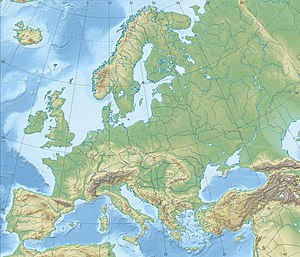
Back معركة ريفولي Arabic Batalla de Rivoli Catalan Bitva u Rivoli Czech Schlacht bei Rivoli (1797) German Μάχη του Ρίβολι (1797) Greek Batalo de Rivoli Esperanto Batalla de Rívoli Spanish Bataille de Rivoli (1797) French Rivoli csata Hungarian Battaglia di Rivoli Italian
| Battle of Rivoli | |||||||
|---|---|---|---|---|---|---|---|
| Part of the Italian campaigns in the War of the First Coalition | |||||||
 Napoleon at the Battle of Rivoli, by Henri Félix Emmanuel Philippoteaux | |||||||
| |||||||
| Belligerents | |||||||
|
|
| ||||||
| Commanders and leaders | |||||||
|
|
| ||||||
| Strength | |||||||
| 22,000[2] | 28,000[2][3] | ||||||
| Casualties and losses | |||||||
| 3,200[2][3]–5,000[4] | 12,000[2]–14,300[3] | ||||||
Location within Northern Italy | |||||||
The Battle of Rivoli (14 January 1797) was a key military engagement during the War of the First Coalition near the village of Rivoli, then part of the Republic of Venice. In the climax of the Italian campaign of 1796-1797, the outnumbered French Army of Italy commanded by General Napoleon Bonaparte decisively defeated the attacking Austrian army commanded by General of the Artillery Jozsef Alvinczi, who was attempting to march south in a fourth and final attempt to relieve the siege of Mantua.[5] The French victory at Rivoli further demonstrated Bonaparte's capability and deftness as a military commander, and led to the Austrian surrender of Mantua in February, French consolidation of northern Italy, and ultimately France's victory over Austria in the war later that year.
- ^ Forrest 2011, p. 77.
- ^ a b c d Bodart 1908, p. 318.
- ^ a b c Clodfelter 2017, p. 100.
- ^ Chandler 1979, p. 328.
- ^ Rothenberg, Gunther E.; Keegan, John (2000). The Napoleonic Wars. The Cassell history of warfare. London: Cassell. pp. 46–47. ISBN 978-0-304-35267-8.


